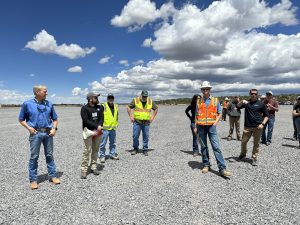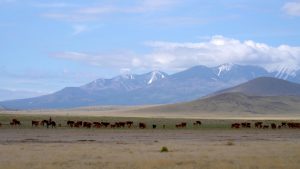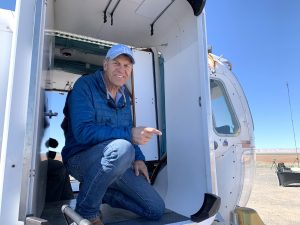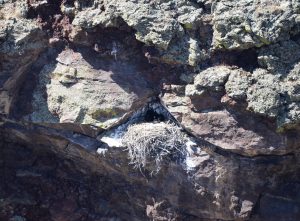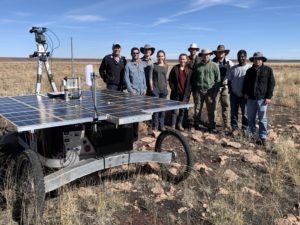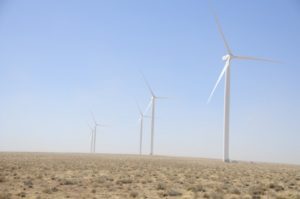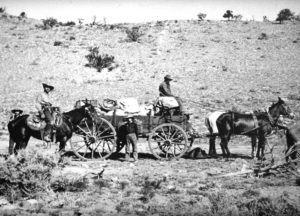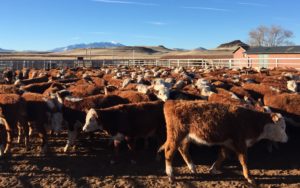Young bidders win big at Hashknife Colt Sale auction.
On that warm second Saturday morning in July at Spider Web Camp north of Flagstaff, the event began with Babbitt Ranches President and General Manager Billy Cordasco welcoming the crowd, interacting about celebrations of the last year and honoring the passing of friends and relatives using the ranch symbol of the “Yellow Rose.”
Then, Ranch Manager Clay Rodgers and Auctioneer Reed Flake stepped into the corral with a Western yin and yang of sorts. Rodgers, with all the methodical pace and thoughtfulness of a lifelong cowboy, informed a bleacher full of working ranchers, rodeo champions and knowledgeable spectators about the colts and their bloodlines as they each appeared with the mare. Flake, with all the excitement, humor and panache of a seasoned rodeo announcer, started the bidding and raised the energy in the stands.
In no time, spirited bidders were vying for new colts.
“I saw that filly and said, ‘That’s the one!’” said Grace, a high school girl with fiery determination.
Fearlessly, she entered the bidding battle with experienced horse buyers for a bay filly. She showed the crowd that she meant business and today, that young horse has a name, Cinnamon, as it gallops toward its new life with Grace.
“I came to Babbitt Ranches because I wanted a good all-around horse for riding trails, roping and barrels. This is definitely my dream,” she said.
Elsewhere in the crowded bleachers, another teenager could see her future prancing across the arena. Taylor Girvin, at age 19, is an accomplished competitor with four years on the Arizona High School Rodeo Association circuit. “I do a little bit of everything, but my main events are breakaway and barrels.”
Last year, she took fifth place in breakaway roping at the Junior World Finals in Las Vegas. This fall, she plans to compete in rodeo as a school sport at Central Arizona College. Eventually, she hopes to lasso the “Pro Rodeo Rookie of the Year” award.
Taylor’s journey includes Babbitt Ranches horses from the Driftwood lineage, which Western Horseman magazine has ranked number five on its list of top 10 ranch horse bloodlines. Driftwood, also known as “Speedy” to ropers, was a legendary rodeo horse born in 1932. Registered with the American Quarter Horse Association, he was inducted into the AQHA Hall of Fame in 2006. Driftwood sired more top rodeo horses than any other horse of his time. His offspring continue to compete on the professional rodeo circuit. Driftwood’s legacy is carried on through the Babbitt Ranches horse breeding program.
“I love their foundation,” said Taylor. “A lot of horses are locked in the bone and hoof. They are not put together well. But those that come from foundational bloodlines are built to last. They are not going to fall apart when you start competing. My great grandpa used to race Driftwoods. I love those horses. My family has always had some.”
Taylor’s grandfather, Pete Mickelson, owns P&M Trailer Sales. The company has worked with Babbitt Ranches through the years and the family is quite familiar with the Babbitts’ Hashknife horses. The Hashknife brand symbolized the days of the Wild West in American history. It originally belonged to the Aztec Land & Cattle Company, which operated in Northern Arizona from 1984 to 1902. It later became the property of the Babbitt family.
Taylor’s family successfully bid on a filly and a colt last year. This summer, she was on her own in the bidding frenzy. By the end of the auction, she was the owner of two colts with Driftwood genes. One is by the sorrel stallion, Frenchmans Bo Jetz. “I really like that one,” she said. The other was sired by the palomino stallion, Stolin Firewater. “Those are really good barrel horses.”
After a year on Babbitt Ranches, the colts will join the family’s other horses at their MG Ranch in Doney Park. “I was raised on that ranch,” said Taylor. “I probably spend at least five hours a day riding. Horses teach you patience, hard work and responsibility. I would love to train performance horses that are affordable for people.”
With winning bids ranging from 5,000 to $12,500, 23 colts, all AQHA registered, were sold. “The sale was strong,” said Rodgers. “Bidders were mostly people wanting horses for rodeo-type recreation. They appreciate these horses for their disposition and athletic ability.”
For Babbitt Ranches, the Annual Hashknife Colt Sale is a decades-old tradition that has never been about selling horses. “It’s about community and relationships,” said Cordasco, who, along with the Babbitt Ranches community, offers the event free to the public every year. “We feel so blessed to have family, friends and associates come out to the ranch, participate in this Western tradition, see these beautiful horses and enjoy the day together.”
The Colt Sale is over until the second Saturday of July 2024, but for cowgirls like Grace and Taylor with big dreams and new colts, the ride has just begun. QCBN
By Bonnie Stevens, QCBN
Photo by Kay Lyons: Grace Copeland, 16, saved her money from odd jobs to purchase her first horse at the Babbitt Ranches Annual Hashknife Colt Sale in July. At age 19, Taylor Girvin is a seasoned rodeo competitor. She successfully bid on two colts that will grow up with the other horses on her family’s cattle ranch.





